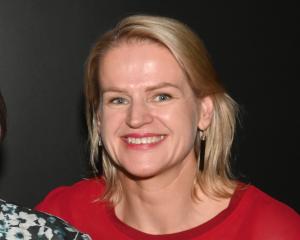Fisher & Paykel Healthcare is poised to grow, with a rising currency the only impediment, Morningstar analyst Chris Kallos says.
The listed New Zealand company was expanding its medical device range with the aim of improving care and outcomes for patients in an increasing range of applications, in both the hospital and home-care setting.
The firm's strong competitive position in respiratory and acute care (Rac), along with its ability to churn out innovative new products, would propel returns in the long run, he said.
''We expect revenue to grow by double digits in constant currency terms, and earnings to exceed revenue growth as a favourable product mix and cost savings deliver operating leverage.''
Morningstar was ''very bullish'' on Rac's long-term prospects and believed it could expand at a double-digit rate, Mr Kallos said.
The business enjoyed good pricing power as a result of the company's 70%-plus global market share.
The core invasive ventilation product - used in ventilating patients under intensive care - was growing at about 5% to 7% a year.
However, the biggest opportunity lay in new applications, such as non-invasive ventilation, oxygen therapy, humidity therapy and surgical humidification which made up 41% of Rac revenue, he said.
The total addressable market for non-invasive ventilation and oxygen therapy was estimated at 40 million patients.
''FPH remains the clear market leader in these new applications, which are growing at rates in excess of 20% a year and delivering better margins because of a recurring stream of high-margin consumables revenue.''
The obstructive sleep apnoea (OSA) business also had exciting growth prospects, exemplified by the small number of patients - fewer than 10 million - now being treated, compared with the 50 million to 60 million patients affected, Mr Kallos said.
Increasing diagnosis rates, better diagnostic and treatment devices and improving awareness were contributing to market growth, estimated to be up to 8% a year.
The advent of home sleep testing was expected to drive growth rates in the 10% to 15% range in the medium term because of lower lead times and substantial cost savings to patients and insurance companies.
Home testing would encourage patients who would otherwise shy away from sleep labs to test themselves at home using an automatic continuous positive airway pressure device.
Manufacturers such as FPH would also benefit from selling higher margin premium products that were mainly used for home sleep testing, he said.
In the OSA business, FPH faced tough competition from Philips Electronics and ResMed. Philips pioneered the industry and possessed admirable marketing and distribution capabilities.
Also, its products were synonymous with sleep apnoea treatment in the United States, leaving FPH with challenges when educating physicians about its own product set.
Competitors also demonstrated willingness to compete on price by blanketing the market with free samples during past launches of new products.
''FPH must stay ahead of the pack on innovation to prevent price erosion from substantially damaging returns.''
In comparison with OSA, competition in RAC remained benign. Additionally, FPH commanded good pricing power, given its large market share, Mr Kallos said.
FPH was focusing on introducing at least two new OSA masks every year and one new flow generator every three to four years.
That would help ensure the company outpaced market growth.
In the longer term, FPH's OSA market share was expected to remain in the 8% to 9% range, with a higher share of masks than of flow generators.
In Rac, the company would remain a clear market leader, with a long runway for growth.
Now, the company's new product pipeline was the longest in its history, which was positive for future revenue growth, he said.
At a glance
Fisher & Paykel Healthcare manufactures devices used in the treatment of respiratory and sleep apnoea disorders. The company is in good financial health with net debt/capital of 23% and interest cover of 22%. Management intends bringing the gearing down to 15% because of the company's large foreign exchange exposure.












